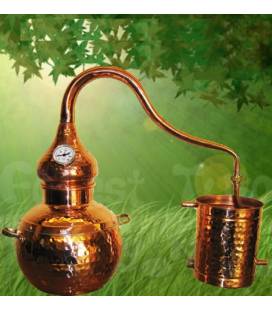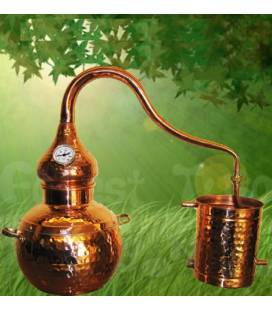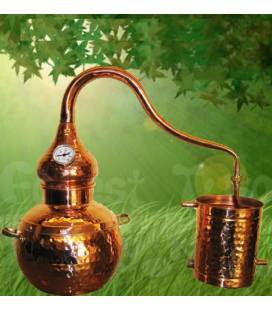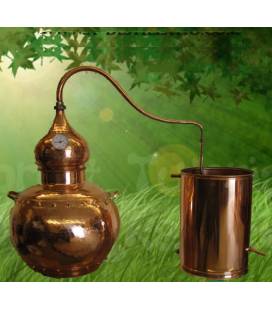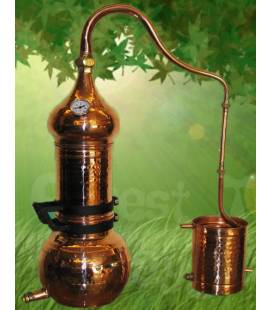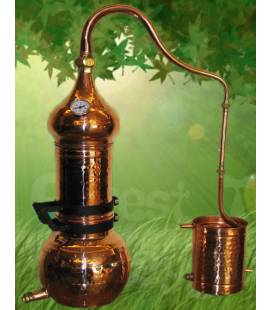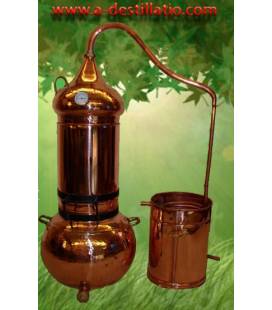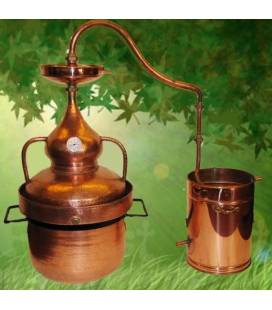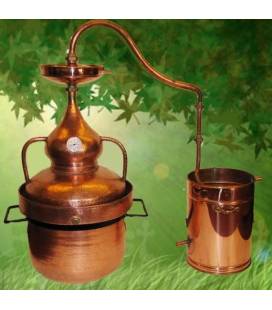Quantity
Total
Product successfully added to your shopping cart
There are 0 items in your cart. There are 0 items in your cart.
Total products (tax incl.)
Total shipping (tax incl.) To be determined
Tax 0,00 €
Total (tax incl.)
Continue shopping Proceed to checkout

How to Remove the Smell of Distillate
How to Remove the Smell of Distillate.
How to get rid of the smell of distillate to make it enjoyable for consumption? To the best of my modest abilities, I strive to rid the distillate of these improper clichés, treating friends to a product with a mild taste and without the characteristic fusel odor. When asking the question "how to remove the smell of distillate," we specifically mean the unpleasant odor that makes you recoil when inhaling. Our goal is to make the drink either have no distinctly pronounced smell at all or possess what is called "aroma" or "bouquet." Well, you can familiarize yourself with flavoring in the corresponding section, but let's figure out how to eliminate the unpleasant smell of distillate.
So, let's start with the basics — where does the unpleasant smell of distillate come from? These are complex chemical compounds, often not the most beneficial, so getting rid of the smell is not just a whim but a fight for quality and a fresh head the next morning.
So, let's identify the enemy:
Acetic aldehyde — 20.8°C
Formic ethyl ether — 54.3°C
Acetomethyl ether — 57.1°C
Methyl alcohol — 64.7°C
Acetic ethyl ether — 77.8°C
Formic acid — 100.7°C
Acetic acid — 118.1°C
Oleic ethyl ether — 121.3°C
Amyl alcohol — 138°C
Valeric ethyl ether — 146°C
Furfurol — 161.7°C
These are the same esters and aldehydes commonly referred to as "fusel oils." The heads, boiling at temperatures lower than ethyl alcohol, are highlighted in blue, and the tails, boiling after ethyl alcohol, are highlighted in red.
The main rule to eliminate the unpleasant smell of distillate: So, we deduce the first and most important rule — strictly cut off the heads and tails in both distillations! In this case, it is better to be overly cautious than not cautious enough. Let a few dozen grams of good moonshine go to waste rather than a few grams of nastiness ending up in the drink.
In half the cases, this will be sufficient to solve the problem of the unpleasant smell of the distillate. It also happens that the distillate "smells sour" — this is evidence that the mash has soured — perhaps there was access to oxygen in the mash, and along with it.
Yeast actively multiplied by lactic acid bacteria. This issue is resolved by adhering to the technology of aging the mash - using clean containers, a water seal, and mash ingredients without spoilage and mold.
The smell of burnt rubber indicates the use of rubber tubes or connections. All rubber parts of the moonshine still should be made of silicone or food-grade rubber.
The smell of acetone is a result of incorrect separation of heads - they, when present in the moonshine, give it an acetone-like odor.
These are the main problematic smells that can be present in the product.
So, by distilling the mash in a Copper ALEMBIC and strictly following the distillation and purification process, you can immediately obtain a good product without the unpleasant smell of fusel oils.
To obtain a distillate without an unpleasant odor:
Definitely discard the heads and tails!
Use a copper ALAMBIC.
Prepare the mash according to the technology, do not overferment, precipitate before distillation, filter, and clarify.
Ideally, you can further purify the product after the second distillation.
Adhering to these basic principles makes it easy to obtain a good raw product, which can be further refined through aromatization.
Related products
Copper Alambic - 3 L Destille...
140,20 €Copper Alambic - 5 L Destille...
162,26 €Copper Alambic - 15 L Destille...
249,33 €- 355,65 €
- 203,02 €
- 360,94 €
- 390,70 €
Alambic Still - Water Sealing...
260,80 €Alambic Still - Water Sealing...
530,07 €
Leave a CommentLeave a Reply
You must be logged in to post a comment.
Blog categories
Tags
Latest Comments
No comments
Blog search
Related articles

Errors in Choosing a Copper Distiller
2023-12-12

